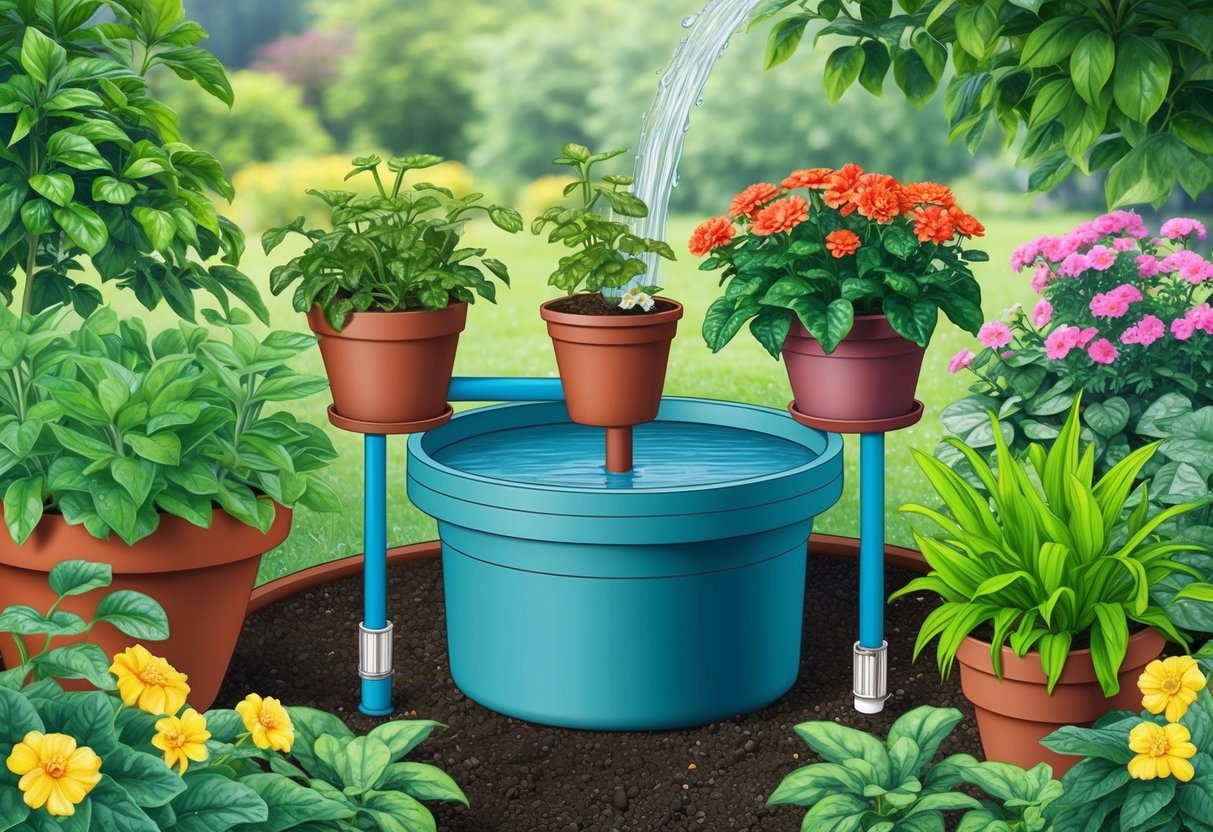
Tending to a garden can be rewarding, but it often requires daily attention to ensure that plants stay hydrated, especially during hot or dry periods. A self-watering garden system gives gardeners a consistent and dependable way to maintain healthy plants, dramatically reducing the time and effort spent on manual watering.
By harnessing simple materials and easy-to-follow plans, anyone can install a practical solution that ensures their garden thrives even when life gets busy.
Building a self-watering setup not only helps prevent plants from drying out, but also delivers water directly to the roots, promoting efficient growth and saving water. Automated watering solutions can take many forms, from drip irrigation with timers to homemade systems using basic supplies such as hoses, tubes, and water reservoirs.
For those interested in step-by-step instructions, assembling a DIY self-watering planter is both accessible and cost-effective.
Whether managing a backyard vegetable patch or a collection of potted plants, self-watering systems offer peace of mind for gardeners who travel, have busy schedules, or simply want a more hands-off approach to routine care. These systems can transform the gardening experience.
Understanding Self-Watering Garden Systems
Self-watering garden systems offer a reliable approach to maintaining soil moisture for a wide range of plants. By reducing manual watering, these systems are a practical solution for busy gardeners or anyone looking to boost the efficiency of their gardening routine.
What Is a Self-Watering Garden System
A self-watering garden system automates the watering process by using built-in reservoirs and capillary action. These systems often feature a dual-layer design: the upper layer holds the soil and plants, while a water reservoir sits beneath.
Through wicking material or capillary tubes, water slowly moves upward to the plant roots. Common types include self-watering pots, wicking beds, and self-watering containers that work for both indoor and outdoor gardening setups.
The core idea is to supply consistent moisture directly to the root zone. Many planters are designed with a water level indicator to show when it is time to refill.
This setup prevents water from sitting on the surface, which can minimize evaporation and discourage fungal diseases. The technology is adaptable for both large raised beds and compact container gardens found in urban spaces.
Benefits of Self-Watering Solutions
Self-watering garden systems significantly reduce the frequency and labor of manual watering, making them ideal for people with busy schedules or frequent travel. Plants benefit from consistent soil moisture, which supports even growth and healthier roots.
Key advantages include:
- Reduction in water wastage: These systems only supply water as needed, avoiding excess runoff.
- Improved plant health: Consistent moisture levels help prevent root rot and drought stress.
- Versatility: Self-watering containers and pots work with vegetables, herbs, and ornamental plants.
- Water conservation: Reservoirs ensure less frequent refills and reduced evaporation.
Additionally, self-watering solutions are particularly effective in hot climates or during dry periods. Gardeners can use step-by-step guides to set up these systems for optimal results with minimal effort.
Key Components and How They Work
A self-watering garden system uses several integrated parts to deliver moisture efficiently without constant intervention. Each component plays a unique role in keeping plants hydrated and healthy.
Reservoirs and Water Distribution
At the core of every self-watering setup is the reservoir, a water storage unit that supplies moisture over time. Most systems house this tank at the base of a planter or nearby, so it can be easily refilled.
The reservoir prevents overwatering and reduces water waste by holding a controlled supply. Water distribution mechanisms, such as water pumps or gravity-fed outlets, move the water from reservoir to soil.
In advanced designs, a drip irrigation system distributes water to multiple plants using emitters and small hoses, maintaining uniform soil moisture. A simple distribution system may rely solely on gravity, while more elaborate setups integrate pumps for pressured flow.
Keeping water levels consistent is important to avoid drought or root rot, and some gardeners use float valves or level indicators for easy monitoring. Frequent checks ensure all plants receive enough hydration.
Tubes and Connectors
Tubes are essential for directing water from the reservoir to planter pots or garden beds. High-quality, flexible tubing ensures steady, clog-free flow.
Gardeners select tube size based on the garden’s layout and the number of plants served. Connectors and fittings join tubes together or link them to various parts of the system.
These may include elbows, tees, valves, or quick-connect fittings. In complex setups, a network of tubes and connectors builds a robust drip irrigation system for larger gardens.
When arranged correctly, the tubing network can reach multiple rows, raised beds, or container groupings. Regular inspection for leaks and blockages helps maintain effective water delivery and keeps maintenance low.
Wicks and Capillary Action
Wicking systems use fabric, rope, or synthetic materials to transport water through capillary action. The wick is placed with one end in the reservoir and the other in the soil.
As the plant consumes water, the wick draws up additional moisture as needed. This process is passive and does not require electricity or moving parts.
Capillary action allows plants to take water at their own pace, making it effective for sensitive species or when away for extended periods. Using properly sized and placed wicks ensures the soil remains evenly moist without making it soggy.
For best results, wicking materials should be durable and resist mold. This setup supports healthy root systems by providing a stable and moderate moisture level.